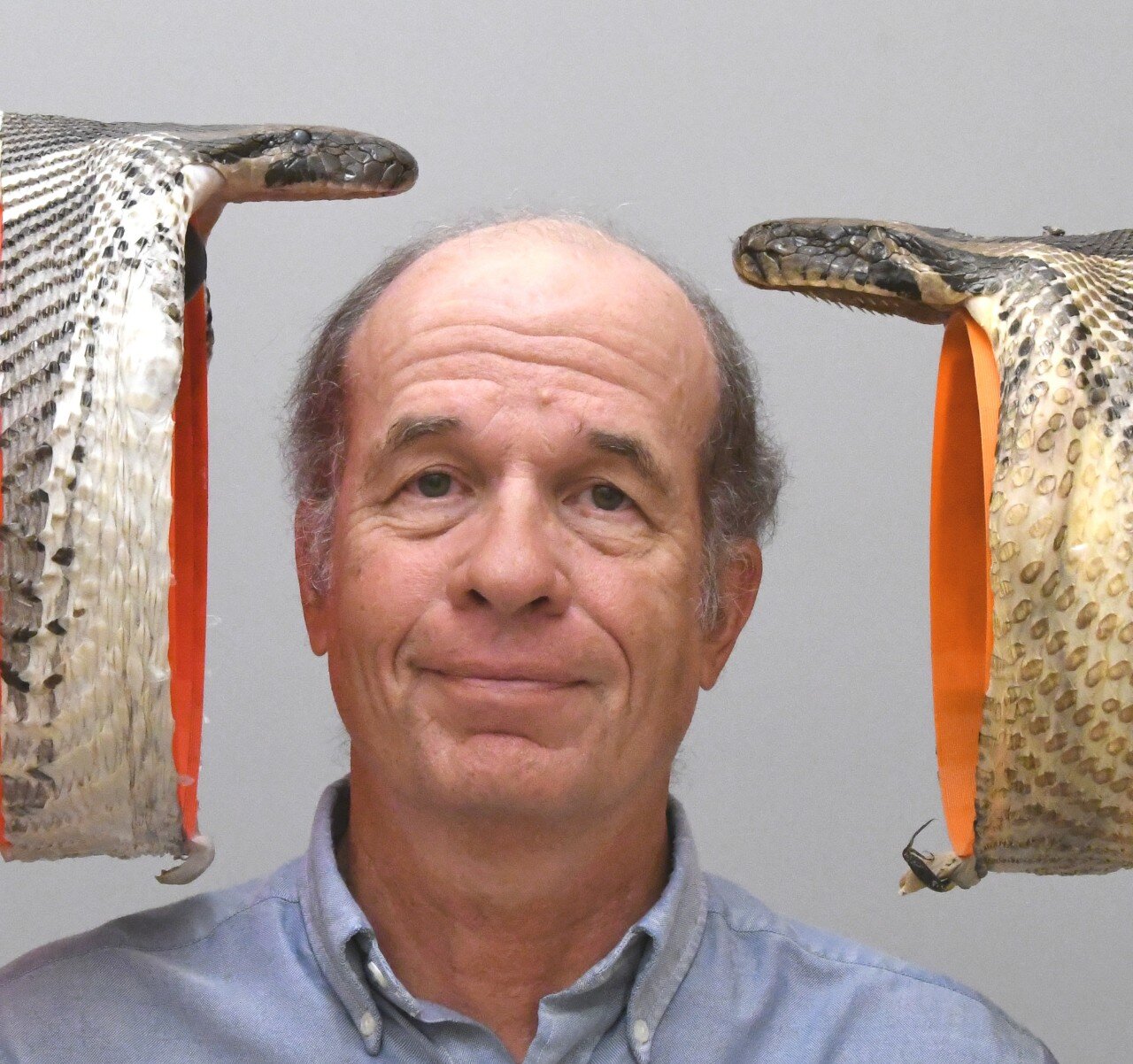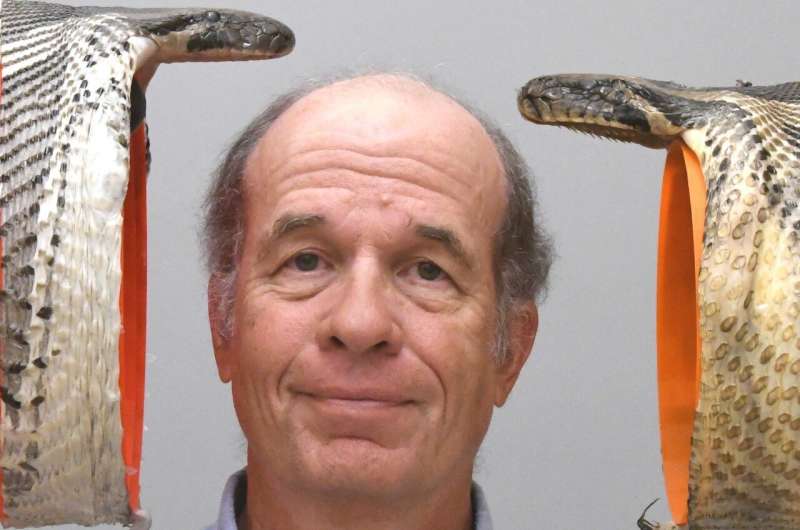

Burmese pythons can consume prey even larger than scientists realized, according to a new study published in the journal Reptiles & Amphibians.
That means more animals are on the menu across southern Florida, where the nonnative, invasive snakes have decimated populations of foxes, bobcats, raccoons and other animals.
Pythons swallow deer, alligators and other prey whole. What they eat is limited in part by how big an animal they can wrap their flexible, stretchy jaws around. Researchers call this the snake’s gape.
University of Cincinnati Professor Bruce Jayne said measurements of snakes captured in and around Everglades National Park show that the biggest pythons have an even bigger gape than mathematical models would suggest.
Jayne examined three of the largest snakes captured by research partners Ian Easterling and Ian Bartoszek at the Conservancy of Southwest Florida, measuring 15, 17 and 19 feet long.
Researchers had previously examined pythons with a gape of 22 centimeters (or 8.7 inches) in diameter. But the largest of the snakes Jayne’s research partners captured had a maximal gape of 26 centimeters (or 10.2 inches).
“That doesn’t sound like a lot—just 18% bigger,” Jayne said.
But the total area of the gape increased by a whopping 40%, Jayne said. The largest snakes had a gape circumference of more than 81 centimeters—the equivalent of a 32-inch waist on a pair of pants.
That means snakes can consume far larger prey than was previously known. Based on prey items researchers found inside Burmese pythons, researchers know they will kill and consume animals nearly too big to swallow. Researchers observed one snake consuming a 77-pound deer, representing two-thirds of the snake’s total mass.
“Watching an invasive apex predator swallow a full-sized deer in front of you is something that you will never forget,” Bartoszek said. “The impact the Burmese python is having on native wildlife cannot be denied. This is a wildlife issue of our time for the Greater Everglades ecosystem.”
Knowing the limits on the size of prey that predators can eat can help researchers predict the ecological impact the invasive snakes might have as they move into new areas.
Burmese pythons are native to the rainforests of southeast Asia. They were introduced to the wilds of Florida through the pet trade as escapees and intentional releases from irresponsible owners.
What gives pythons the ability to eat such large animals is their incredible mouths. The lower jawbone is not fused at the front, allowing the jaws to stretch wide. Their skin is so soft and super-stretchy that it accounts for more than half the circumference of their gape, allowing the pythons to consume prey six times bigger than that of other similar-sized snake species.
“One of the challenges of studying Burmese pythons is the tremendous range in size within the species,” Jayne said.
Researchers examined the scaling relationship between the snake’s gape and its cranial anatomy and overall size to understand its predatory capabilities. Burmese pythons are about 24 inches long and weigh about 4 ounces when they hatch, but they grow fast. They can double their length and body weight in a year. The biggest adults can stretch nearly 20 feet and weigh more than 200 pounds.
“Big pythons longer than 16 feet are very rare. Of the more than 9,000 pythons that contractors have captured in Florida, less than 1% were of that extreme size,” Jayne said.
“It’s almost a certainty that we have yet to capture the biggest Burmese python in Florida,” Jayne said. “So, it seems very plausible that a record-breaking python with a gape of 30 centimeters could eat a 120-pound deer.”
The Conservancy of Southwest Florida began its Burmese python research and removal efforts in southern Florida in 2013.
The group tracked the movements of 120 radio-tagged adult pythons known as “scout snakes” to better understand the invasive population. Its primary objective is to create a database of behavior and habitat use to better understand python activity. This research helps to inform policymakers, biologists and land managers to develop better control strategies for the invasive snakes.
Bartoszek and his team have removed 770 pythons, collectively weighing more than 33,000 pounds, that are large enough at 6.5 feet or more to eat an animal at least the size of a baby deer. If each of these snakes were to consume just one deer as big as they could swallow, Jayne estimates that would represent a staggering 13,000 pounds of prey.
Jayne said this enormous capacity to eat prey is a big concern if pythons spread to other parts of Florida and potentially the rest of the American Southeast. Burmese pythons are showing up in more places across Florida.
“That’s the tip of the iceberg of this phenomenal impact on prey populations in Florida,” he said. “Researchers are trying to get a handle on where the spread might stop.”
More information:
Bruce C. Jayne et al, Big pythons, big gape, and big prey, Reptiles & Amphibians (2024). DOI: 10.17161/randa.v31i1.21867
Provided by
University of Cincinnati
Citation:
Burmese pythons can eat bigger prey than previously thought (2024, October 24)
retrieved 25 October 2024
from https://phys.org/news/2024-10-burmese-pythons-bigger-prey-previously.html
This document is subject to copyright. Apart from any fair dealing for the purpose of private study or research, no
part may be reproduced without the written permission. The content is provided for information purposes only.